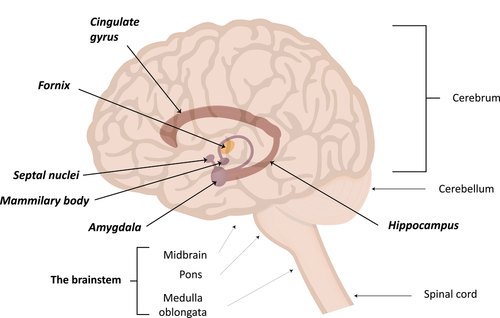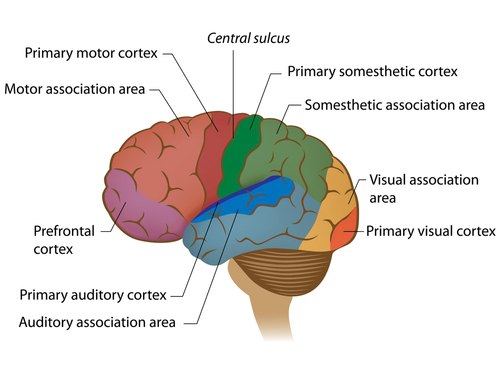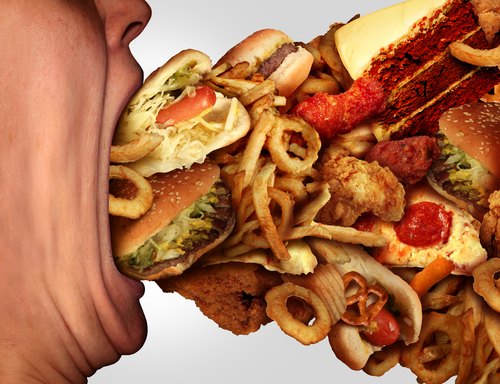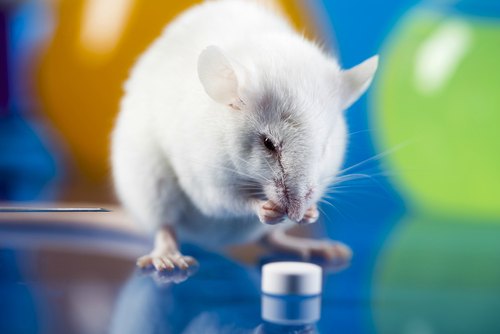Introduction
In the Part 5 we introduced the idea of Allostatic load on the body activating the Hypothalamus-Pituitary-Adrenal axis during times of perceived stress. Now we will explore this in more detail.
Allostatic Load

The body being the remarkable organism that it is, adapts to conditions, both external and internal stimuli the host exposes it to. These can take a positive form such as exercise, good diet and lifestyle, but it will also adapt in a negative way by taking harmful substances like fast and processed food and drugs. Unfortunately, there are some, who despite their attempts to live a healthy lifestyle may be stuck in a stressful job that can undo any positive lifestyle behavior. Furthermore, if you have a stressful occupation coupled with bad eating habits, very little or no exercise is a recipe for disaster over time. Both these negative and positive lifestyles cause stress on the body and eventually cause ‘wear and tear’ on the body referred to as ‘Allostatic load’. This term is all encompassing referring to not only lifestyle and diet but genetics and long term experiences that has served to shape behavioral patterns and physiological reactivity.
Short-term & Long-term Stress
Short term stress can be a positive action testing the body occasionally, keeping it from a ‘long term false sense of security’, however long term stress can be damaging to the body. One of the main stress hormones ‘Cortisol’ can be beneficial in times of short term stress by readying the body to respond to a stressful event, but it can also be damaging during a long term stressful event. Central command, the brain, reacts to sensory information perceived by the Amygdala ( linked to parts of the brain that regulate senses,muscles and hormones) that signal the hypothalamus to trigger the cascade of events that release cortisol from the adrenals (the HPA axis). I don’t need to define stress because I am sure all you readers know what it’s like to be…… STRESSED !!!!!????…..
The Limbic System

The subsystem that controls and regulates our response to perceived stress is known as the Limbic system, that consists of the Hypothalamus, Amygdala,and the Hippocampus. The Hippocampus is our adaptive region, responsible for long and short term memory development, processes received stimuli that include reward, punishment, reinforcement and failure, recognition of what is familiar vs new. Its other functions are more relevant to our stress response, for instance if we are faced with a familiar threat then the stress response is less severe. Familiarity is adapted from recognition, past reinforcement of punishment, failure and Memory.
The Pre-Frontal Cortex

This region of the brain has many functions including planning, personality expression, decision making and moderating social behavior; in summary, the orchestration of thoughts and actions according to internal goals. Its executive function makes decisions concerning conflicting thoughts; good vs bad, better vs best, same vs different, outcome prediction, expectations and social control. In fact it is this region that affect the decision to start a war in the male and less hostile solutions in the female (this region is larger in the female), i.e Males = Hotheads, Females = Cooler heads. In terms of stress this is the region that ultimately decides if the perceived threat or stressor is indeed a threat or not. This decision process is intertwined with the function of the Amygdala the portal for all of the exogenous sensory information which it uses in concert with the host’s stored knowledge to determine how the host is going to respond emotionally. Whatever the decision, messages cascade from the amygdala to the rest of the limbic system and eventually the autonomic nervous system.
Types of Allostatic load
In Dr Jackson’s book ‘Rethinking psychiatric drugs’ presents the argument based on Bruce McEwens 1998 article ‘Protective and damaging effects of stress mediators’ published in the New England journal of Medicine that psychiatric drugs can be considered an example of allostatic load under McEwen’s Type 1 Allostatic load Toxic Metabolites. In fact all four types of allostatic load are affected one way or another by psychiatric drugs.
Type 1 Allostatic load (Toxicity)

Toxicity in the Gut
Generally, if individuals are on the path to take prescription drugs their gut is already in a state of ill health, which in many cases is the source of the cognitive disorder. Toxicity in the gut breaches the epithelial security barrier allowing toxins to enter the bloodstream and cross the blood brain barrier into the brain. In my fourth article on the ‘Microbiome and disease’ I discussed how the epithelium in the gut is constructed from Tight Junctions (TJ) that separate the outside of our body called the the Lumen, which is physically inside our gut of our bodies, but not inside the inner chamber of the body where the bloodstream is. The TJ security barrier are made up of enterocyte cells that populate the microvilli responsible for nutrient absorption.
Anti-Inflammatory Drugs have the capacity to breach the barrier
Drugs like NSAID (Non steroidal anti-inflammatory drug) such as Indomethacin,, Aspirin and others do their best to destroy one barrier maintenance task by inhibiting Prostaglandin synthesis. Gastrointestinal infection from parasites such as Cryptosporidium Parvum, and toxins secreted from Bacteroides Fragilis also put pressure on wall integrity. One of the protein families that are part of the tight junction membrane are called Claudins and it is known that Clostridia toxins (Perfringens enterotoxin) bind to the Claudin proteins increasing tight junction permeability. One of these pathways concern the ‘Zonulin’ pathway which bacteria such as Vibrio Cholerae exploit by secreting a variety of toxins including ‘Zonula Occludens’ (an enterotoxin). This toxin binds to the apical membrane receptors on the enterocyte creating an intracellular pathway increasing TJ permeability to the extent of a gut barrier breach.
Other causes of Epithelial breach – Stress
Stress in large doses is a real ’tissue killer’ and involves modulation of many hormones, cytokine signaling and significant neuro transmission. It also decreases mucosal blood flow, potentially compromising integrity of the mucosal firewall.
Potential physiological damage caused by psychotropic drugs
Psychotropic drugs cause stress to the body by repeated doses, and animal studies have shown that repeated doses of SSRI drugs like Prozac and Zoloft cause swelling and kinking of serotonin neurons in the brain eliciting an allostatic (stress like) response to repair the damage to the neurons. There is no reason why this same damage is not occurring in the human body as well.
Type II Allostatic load
(lack of adaptation)

A type II allostatic load is typically a short-term stressful event like public speaking or taking an exam. After the presentation or exam is over then the stress response dampens and everything goes back to normal. If anybody out there has done any public speaking you will know that initially you feel butterflies in your stomach, dry mouth, and feeling nervous. Generally after a short while you calm down and your body discontinues its response to the stress. This part of the stress process is referred to as Habituation since your body has become accustomed to the stress. Similarly, taking an exam can be a short term stressor. If your have done adequate prep then you will expect certain questions on the exam paper, so when you open the exam paper and quickly scan the questions and most are what you expected, the stress response you feel begins to diminish resulting in habituation.
Psychotropic drugs, Habituation and Hyperprolactinemia
Like our public speaking event or taking an exam psychotropic drugs trigger the bodily in a similar way but this time the stress response does not diminish and the body is in this constant condition until the drug’s effects have worn off. Neuroleptic drugs such as Clozapine and Risperdal have this effect causing a constant elevation in Prolactin, a hormone produced by the pituitary gland. An excessive amount of Prolactin causes Hyperprolactinemia, a form of drug induced hypersecretion of Prolactin which interferes with the male and female reproduction organs such as erectile dysfunction and irregular menstrual cycles and over a period of time Osteoporosis. Other drugs like Calcium channel blockers, SSRI, Dopamine synthesis inhibitors can also cause this problem. These drugs cause Hyperprolactinemia because they block the effects of dopamine from the pituitary, which, under normal circumstances this gland would regulate the secretion of prolactin. However, there is an antidote that counteracts these effects called norprolac (quinagolide) , …..Johnny’s in the basement mixing up the medicine, I’m on the pavement thinking about the government..the man in the trench coat, badge out laid off, says he’s got a bad cough, wants to get it paid off…..sorry I just flipped my insanity switch for a moment….this is beyond stupid, just like Cathy in the previous article..taking Haldol and an antidote Cogentin...SIMPLE ANSWER, DON’T TAKE ANY OF THEM !!.
Psychotropic Drugs and Insomnia
(Sleep deprivation experiments in rats)

Many of these psychotropic drugs cause insomnia. To those ignorant prescribers you might think that this is not a big deal..well it is. Sleep deprivation in rat experiments have reduced their life span from 3 years to 3 weeks. Ask Allan Rechtschaffen University of Chicago researcher who conducted such experiments in the 1990’s. His conclusions toward death and sleep deprivation caused body temperature variation (changes with sleep stages), increased food intake, weight loss, increased metabolic rate (possibly by the release of acetylcholine to stimulate muscle), increased plasma norepinephrine, decreased plasma thyroxine, increased triiodothyronine-thyroxine ratio (T3/T4) and an increase of an enzyme (Type II 5′-Deiodinase) that mediates thermogenesis by brown adipose tissue. So you could say the rats died of ‘hypothermia’ since their bodies attempted to conserve heat by possibly shivering to raise temperature, and non shivering which occurs in brown adipose tissue (turns food into heat). Regulation of ‘non shivering’ thermogenesis is performed by the thyroid hormones and the sympathetic nervous system (stimulated by hormones norepinephrine and leptin). The triiodothyronine-thyroxine ratio varies according to a nyctohemeral profile (daily 24 hr cycle) where this ratio increases at night. It is plausible that this could occur in the human organism, and it is theorized that humans can survive 3 times as long without food as opposed to without sleep.
Sleep Deprivation in Humans

Sleep deprivation in the human can cause cognitive impairment, memory lapse/loss, confusion, mood changes, impaired judgment, hallucinations, impaired immune system, increased heart rate, hormone levels, headache, malaise, irritability, risk of seizure, mania, psychosis type symptoms, diminished alertness, slow rate of glucose processing (risk of diabetes type II), enhanced activity of the HPA axis, and prevents the brain from putting an emotional event into a proper perspective and making a controlled suitable response to that event. Humans experience 3 stages of NREM (Non Rapid Eye Movement) sleep and REM sleep. All stages of sleep are part of an essential physiological process where NREM is necessary to turn off neurotransmitters, allowing their receptors to rest and regain sensitivity, and to allow enzymes to repair brain cell damage from free radicals (since high metabolic rates experienced while awake damages the enzymes leaving them incapable of efficient repair.
Endocrine – Glucose Homeostasis and Onset Obesity

Obesity development is certainly not disconnected in this whole process since lack of adequate sleep disturbs endocrine homeostasis by exerting an effect on energy balance in the morning by the reduction of energy expenditure and the drive to overeat. Biologically, this deprivation process lowers plasma leptin levels (the hormone that is secreted by the adipose tissues and targets the Hypothalamus signaling satiety (signals fat stores are sufficient) has been achieved and to stop eating). Increased Ghrelin levels (a growth like hormone known as the ‘hunger’ hormone produced by ghrelinergic cells in the gastrointestinal tract that targets the hypothalamus signaling that we need to eat). However, there is another hormone, Insulin, which is released by the pancreas that is connected to this process. Evidence suggests that Insulin and Ghrelin influence each other especially within the Glucose homeostasis process. The more body fat generates more plasma circulating leptin, however if the individual is constantly consuming sugar generating food, insulin (which tells the hypothalamus to store energy in the adipose tissue) levels stay high which blocks the Leptin signal to the hypothalamus. This results in the individual continually wanting to eat, because the leptin signal telling the brain that that sufficiency has been reached ,never gets to the receptor site. There is also evidence of crosstalk that occurs between ghrelin and insulin pathways that goes beyond our discussion for now.
Finally, with Habituation as we have just discussed comes sensitization where the drug taker becomes more responsive (more sensitive) to the stimulus. For example stimulants such as Ritalin and Dexedrine inhibit the dopamine transporter and sensitize the body to psychomotor and behavioral effects such as restlessness, hyperactivity ,hallucinations and paranoia. In some cases psychotropic stimulants over-sensitize the pathways within the nucleus accumbens (region of the brain responsible for Aversion, motivation, reward, reinforcement learning and addiction) causing a dissociation between euphoria and craving.
Conclusion
The more you learn, I hope you are more convinced that taking these drugs is not like a last resort, they should be avoided…AVOID AT ALL COSTS..you can heal your child or yourself by just taking the gaps diet. I am aware that some psychiatric disorders develop through adverse upbringing and lack of nurturing for whatever reason, producing offspring in some circumstances with a sense of being unwanted, unloved, abused physically and psychologically, and then aggravated still further by poor lifestyle choices. Even under these circumstances there are some therapists out there that do not resort to drug peddling; seek them out and get help psycho socially, but under no circumstances should you subject your body to this poison.
“The farther backward you can look, the farther forward you will see.”
-Winston Churchill
“I remained too much inside my head, and ended up losing my mind.”
-Edgar Allan Poe
“When a doctor does go wrong, he’s the first of criminals. He has the nerve and he has knowledge.”
-Sir Arthur Conan Doyle
References/Acknowledgments:
- Anatomy of an Epidemic Robert Whitaker Book 2015
- Thermogenesis, brown adipose tissue, sleep deprivation,ghrelin Wikipedia
- Rethinking Psychiatric drugs Grace Jackson Book 2005
- Prolactin you and your hormones
- Nocturnal increases of the triiodothyronine-thyroxine ratio in the rat thymus & pineal gland following increases of type II 5’deodinase activity Soutto, Guerrero,Osuna,Molinero 1998 NCBI
- Sleep deprivation in the rat by disk over water method Allan Rechtschaffen, Bernard Bergmann Behavioral brain research ( Elsevier) 1995
- NREM sleep -Types and stages of sleep Howsleepworks
- Various quotes Criminal Minds Fan site
About The Author: Eric Malouin
In terms of my heritage I am not a thoroughbred, I am half English from England and half French Canadian from Quebec. Having spent the last 10 years in Medical research I thought that it was time to share my passion for true health to anybody interested in maintaining health without using conventional medicine. Once in the distant past I lived off conventional grocery shelves until you visit the man in the white coat and then a light shines through the darkness that you had not realized you were in… I was in..the twilight zone….I cured my own problems using natural methods, although they were not a big deal since I have always exercised..jogging every morning and tennis 12 hours/week, swimming but I was eating a lot of devil food that was causing my body to become unbalanced..an easy fix..reprogrammed my taste buds and gave the food back to the devil…lol
I hope you enjoy the articles……
Regards,
Eric
Contact the Author: emalouin@gmail.com